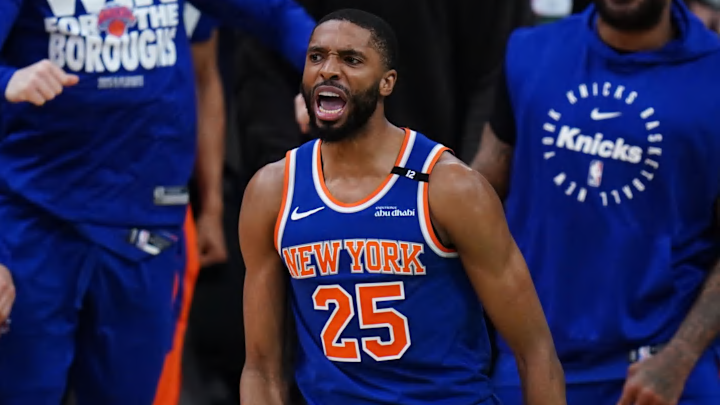Roughly one year later, the Mikal Bridges trade continues to be universally viewed as an overpay by the New York Knicks. But as the recent Desmond Bane blockbuster proves, context is everything. And while the Knicks did not by any means fleece the Brooklyn Nets last summer, one thing is now absolutely certain: Everyone is blowing the price they paid for Bridges out of proportion.
Make no bones about it, this whole “They gave up too much for him!” stance is compelling, and difficult to refute when laid bare. The Knicks shipped out four unprotected firsts, a Milwaukee Bucks first, and one unprotected swap for someone who may never make an All-Star team. That’s a big “Yikes!” on the surface.
This reaction has, by and large, carried over to the Orlando Magic acquiring Bane. And the circumstances are eerily similar. They, too, gave up four of their own first-rounders plus one swap (albeit with top-two protection) for someone who has yet to—and may never—make an All-Star team, let alone an All-NBA squad.
Granted, the overall reception of Bane-to-Orlando is a little bit warmer. He is younger than Bridges, and the more proven scorer. Most of all, though, he’s yet to take the floor for his new team. Unlike Bridges, whose uneven play this past year fuels negative perception of New York’s decision to trade for him, the Bane blockbuster retains that mystery-box sheen.
Still, critics and skeptics of both deals tend to miss key points about each transaction. And the oversight is particularly egregious when it comes to what the Knicks gave up for Bridges.
The Knicks had no choice but include more first-rounders for Mikal Bridges
The number of first-rounders sent to Brooklyn is inextricably tied to everything else New York included in the package: a big ol’ steaming pile of pretty much nothing. The Knicks did not fork over any blue-chip prospects or impact veterans. They shipped out Bojan Bogdanovic, Mamadi Diakite, and Shake Milton—players who neither they nor the Nets valued in the short or long terms.
Whenever draft equity is the entire basis of compensation, teams have no choice other than to include more of it. Orlando’s acquisition of Bane reiterates as much. Kentavious Caldwell-Pope (two years, $43.2 million) and Cole Anthony (two years, $26.2 million) were the outgoing salaries. Though the Memphis Grizzlies can certainly use both, they are not net-value additions.
If anything, the Magic needed to include more first-round picks because of how far under water KCP’s contract has plummeted. This is no different from the Knicks showering the Nets in more first-rounders so they didn’t have to include any players of consequence.
New York also paid dearly for the Mikal Bridges contract
Bridges' current and future contract isn't discussed nearly enough when mentioning how much the Knicks gave up to get him.
Even if you're not happy with how he performed in 2024-25, the two years and $48.2 million left on his deal at the time of the trade were a friggin' bargain. A three-and-D wing with extra depth to his offensive bag can get more than sub-17 percent of the salary cap on the market.
The 28-year-old's next deal is also part of the calculus. He is eligible this summer to sign a four-year, $156.2 million extension. That seems like a lot at first glance, but paying him a four-year max in free agency would run $228.6 million. That's a huge difference.
And while you can assume Bridges never gets that money next summer, you can't know for sure. It only takes one team to pony up the max, and there will be more cap space floating around the market. If the Knicks get him to sign on the dotted line this offseason, it constitutes another victory—and must be factored into the price paid to get him.
Future NBA draft picks are always over-romanticized
Finally, there is the value of the draft picks themselves. These first-rounders always look like home runs until they actually come due.
Case in point: Two of the picks New York sent out convey to Brooklyn this year. They check in at No. 19 and No. 26. That is far from back-breaking.
Sure, some of those final years—specifically in 2029 and 2031—get dicey. But no blockbuster trade ever features zero risk.
Whether the Knicks should have cashed in their best trade chips for Bridges is a legitimate discussion. That decision has knee-capped their best offers in other star proposals. But the price they paid relative to the player Bridges can be and circumstances under which he was acquired is hardly malpractice.
At the absolute worst, the jury is still out on this move. Right now, just one year later, with so much left to be determined, it cannot be considered an unmitigated disaster.
